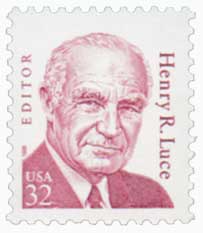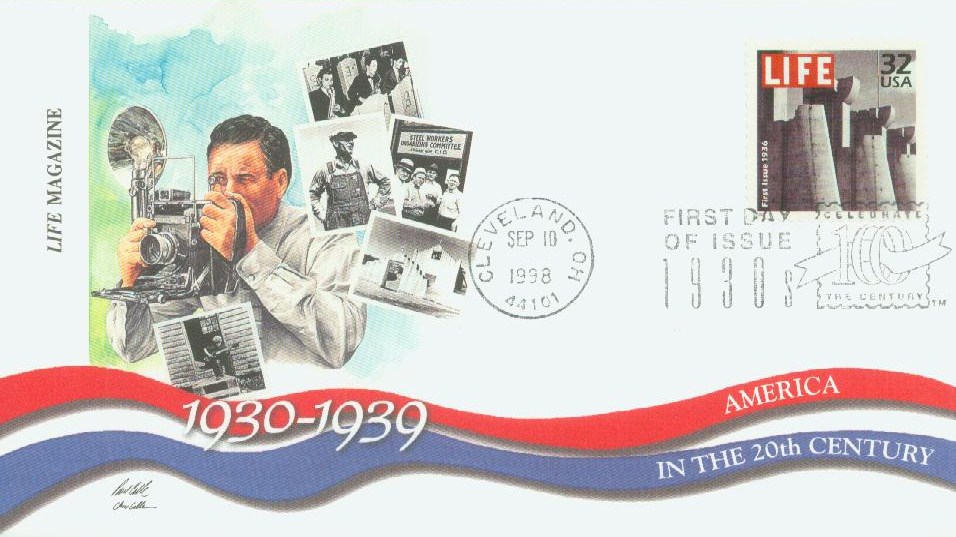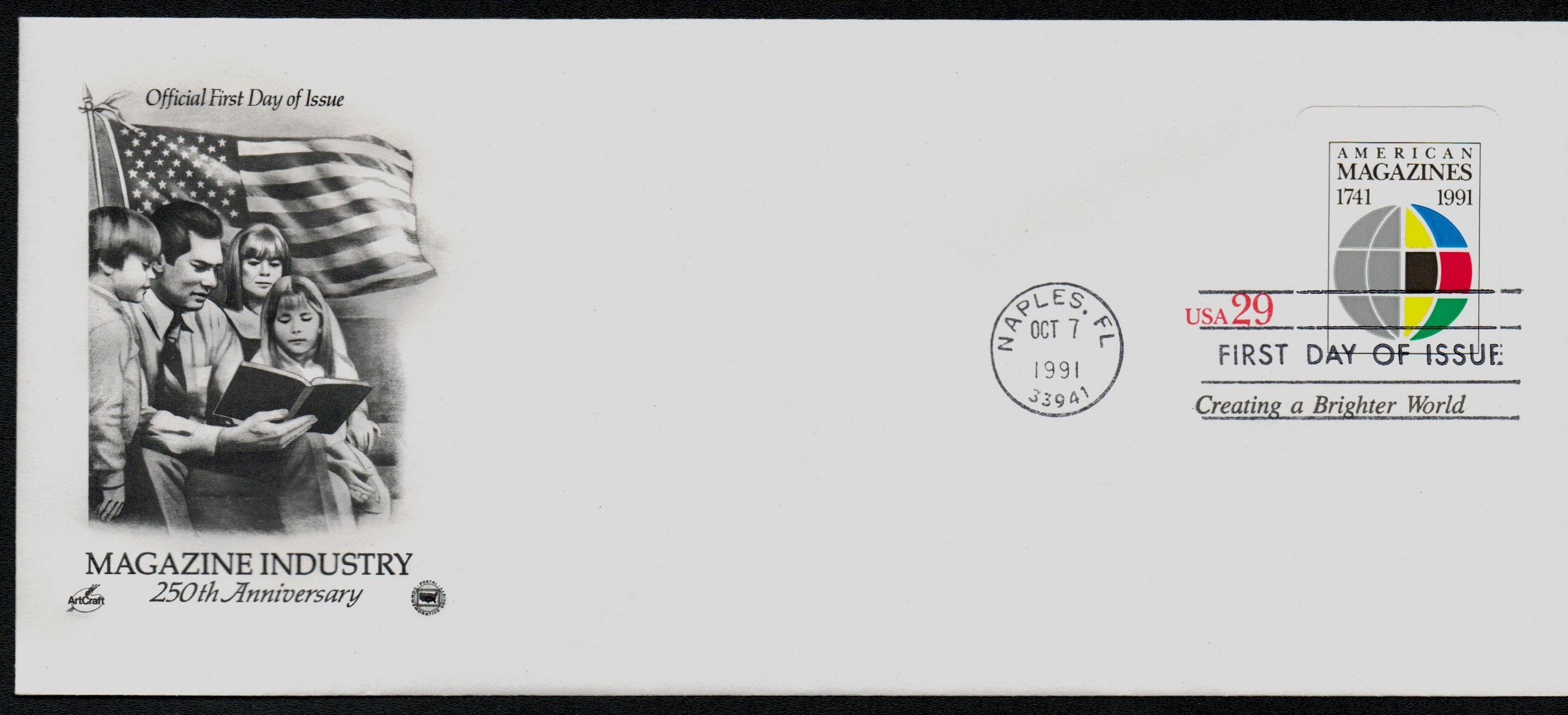
# 3185c - 1998 32c Celebrate the Century - 1930s: 1st Issue Life Magazine
32¢ First Issue of Life Magazine
Celebrate the Century – 1930s
City: Cleveland, OH
Quantity: 12,533,000
Printed By: Ashton–Potter (USA) Ltd
Printing Method: Lithographed, engraved
Perforations: 11.5
Color: Multicolored
Birth Of Henry Luce
Luce spent much of his childhood in China where his parents were Presbyterian missionaries. He attended Chinese and English boarding schools until he was 15, at which point he was sent to the Hotchkiss School in Connecticut.
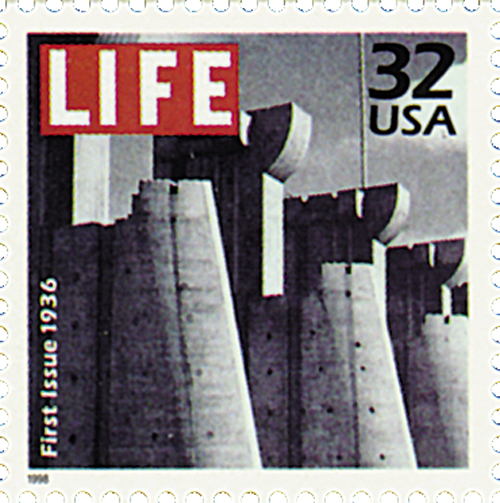
At Hotchkiss, Luce edited the school’s Literary Monthly and met Briton Hadden, who would become a life long business partner. The pair went on to attend Yale College, where they both worked on The Yale Daily News. At Yale, Luce was voted “most brilliant” in his class. After graduating in 1920, Luce spent a year at Oxford University before working as a reporter for the Chicago Daily News.
In 1921, Luce joined Hadden at The Baltimore News. They spent many late nights talking about starting their own news magazine and decided to quit the newspaper together in 1922. Later that year they partnered with two other men to form Time Inc., and published the first issue of Time on March 3, 1923. Initially, Luce served as business manager while Hadden was editor-in-chief. They would then trade the titles of president and secretary-treasurer every year. Hadden’s sudden death in 1929 brought an end to their partnership.
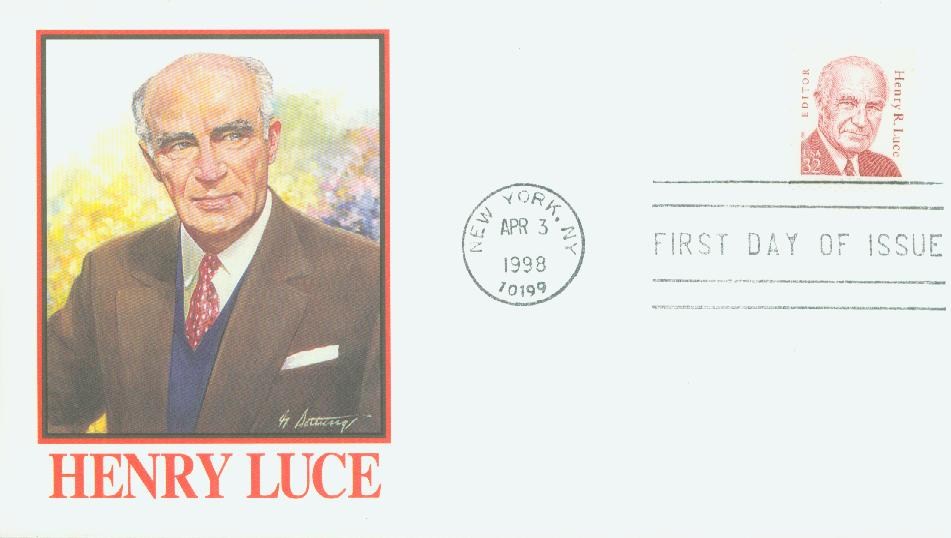
Luce went on to start his business magazine, Fortune, in February 1930. He also bought Life and reformatted it as a weekly magazine featuring photojournalism in 1936. During World War II, many other magazine publishers opposed Luce. President Roosevelt issued a decree that forbid publishers and media executives from visiting combat areas. This was mainly targeted at Luce, who had spoken out against the president for some time.
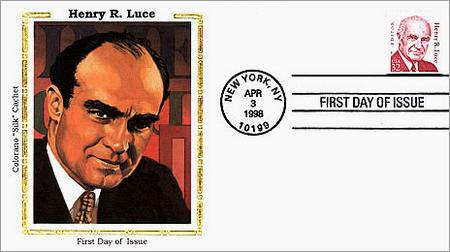
In the 1940s, Luce wrote a now-famous article in Life called “The American Century,” which encouraged American dominance in world affairs for the rest of the century. After the war, Luce started House & Home in 1952 and Sports Illustrated in 1954. By the mid-1960s, Time Inc. was the largest and most popular magazine producer in the world. Luce served as editor-in-chief of all of his magazines until 1964.
32¢ First Issue of Life Magazine
Celebrate the Century – 1930s
City: Cleveland, OH
Quantity: 12,533,000
Printed By: Ashton–Potter (USA) Ltd
Printing Method: Lithographed, engraved
Perforations: 11.5
Color: Multicolored
Birth Of Henry Luce
Luce spent much of his childhood in China where his parents were Presbyterian missionaries. He attended Chinese and English boarding schools until he was 15, at which point he was sent to the Hotchkiss School in Connecticut.

At Hotchkiss, Luce edited the school’s Literary Monthly and met Briton Hadden, who would become a life long business partner. The pair went on to attend Yale College, where they both worked on The Yale Daily News. At Yale, Luce was voted “most brilliant” in his class. After graduating in 1920, Luce spent a year at Oxford University before working as a reporter for the Chicago Daily News.
In 1921, Luce joined Hadden at The Baltimore News. They spent many late nights talking about starting their own news magazine and decided to quit the newspaper together in 1922. Later that year they partnered with two other men to form Time Inc., and published the first issue of Time on March 3, 1923. Initially, Luce served as business manager while Hadden was editor-in-chief. They would then trade the titles of president and secretary-treasurer every year. Hadden’s sudden death in 1929 brought an end to their partnership.

Luce went on to start his business magazine, Fortune, in February 1930. He also bought Life and reformatted it as a weekly magazine featuring photojournalism in 1936. During World War II, many other magazine publishers opposed Luce. President Roosevelt issued a decree that forbid publishers and media executives from visiting combat areas. This was mainly targeted at Luce, who had spoken out against the president for some time.

In the 1940s, Luce wrote a now-famous article in Life called “The American Century,” which encouraged American dominance in world affairs for the rest of the century. After the war, Luce started House & Home in 1952 and Sports Illustrated in 1954. By the mid-1960s, Time Inc. was the largest and most popular magazine producer in the world. Luce served as editor-in-chief of all of his magazines until 1964.







